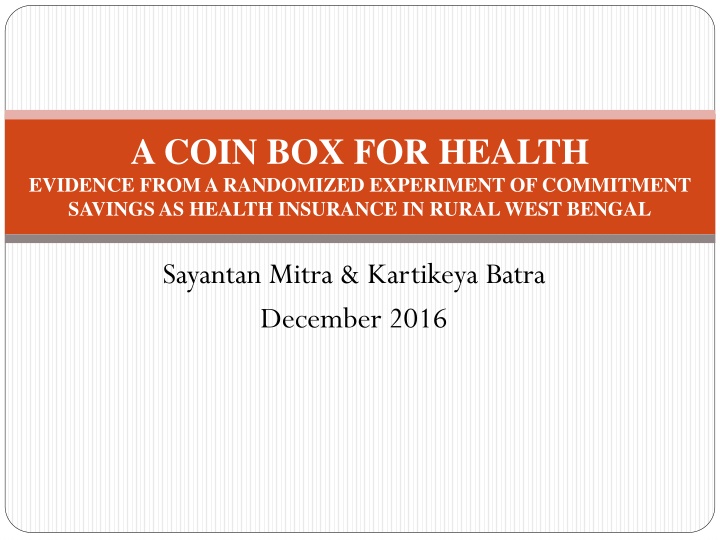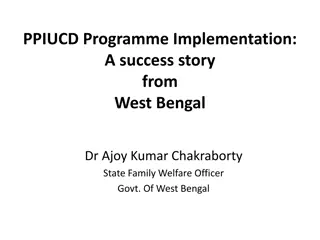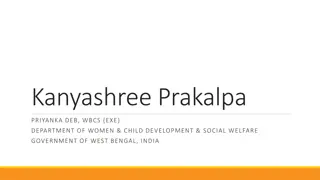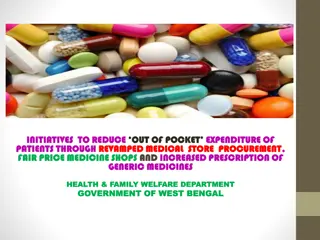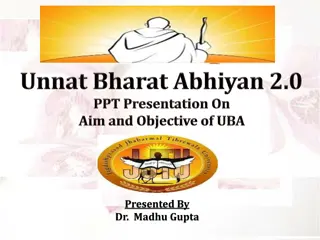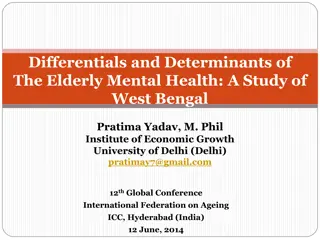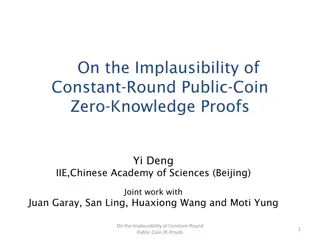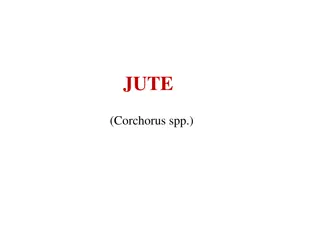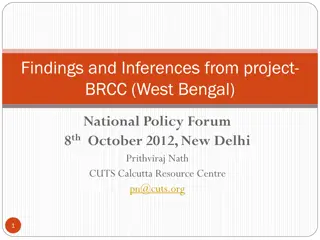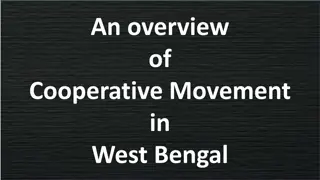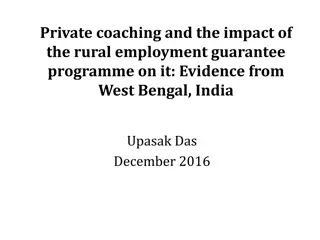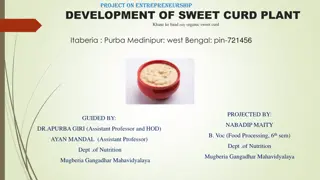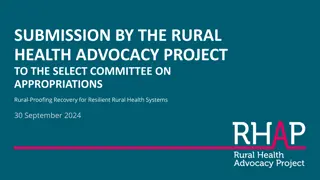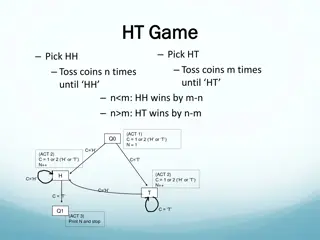Coin Box Intervention for Health Savings in Rural West Bengal
Healthcare expenditure is a leading cause of poverty in India, impacting millions of households. With limited insurance coverage, commitment-based savings products show promise for low-income groups. A randomized experiment in rural West Bengal implemented a Coin Box intervention offering safe savings storage, social pressure for savings, and access to emergency funds. Results suggest potential for improved financial resilience and health insurance coverage among participating households.
Download Presentation

Please find below an Image/Link to download the presentation.
The content on the website is provided AS IS for your information and personal use only. It may not be sold, licensed, or shared on other websites without obtaining consent from the author.If you encounter any issues during the download, it is possible that the publisher has removed the file from their server.
You are allowed to download the files provided on this website for personal or commercial use, subject to the condition that they are used lawfully. All files are the property of their respective owners.
The content on the website is provided AS IS for your information and personal use only. It may not be sold, licensed, or shared on other websites without obtaining consent from the author.
E N D
Presentation Transcript
A COIN BOX FOR HEALTH EVIDENCE FROM A RANDOMIZED EXPERIMENT OF COMMITMENT SAVINGS AS HEALTH INSURANCE IN RURAL WEST BENGAL Sayantan Mitra & Kartikeya Batra December 2016
Healthcare expenditure is key driver of poverty generation in India ~25 million HH pushed into poverty ( financial catastrophe ) Out-of-pocket health expenses affect HHs beyond expenditure Ability to repay debt (Van Damme et al, 2004) Investment in productive assets (Kochar, 2004) Nationally, 5% HHs have health insurance* Situation worse in rural areas (~3%) 1.6% poorest households have insurance coverage NGO-facilitated schemes associated with high premia/administrative costs *Source: International Institute for Population Sciences, District Level Household and Facility Survey, 2007-2008
Literature suggests potential for additional savings for low income groups through commitment-based savings products Jones et al (2003) Xu et al (2003) Banerjee & Duflo (2007) Dupas & Robinson (2013) Banerjee, Duflo & Glennerster (2006) Bernheim, Ray and Yeltekin (2015) Banerjee & Mulainathan (2010) Ashraf, Karlan and Yin (2006) MOTIVATION Karlan et al (2011) Kast, Meier & Pomeranz (2011) Massaro and Woong (1995)
Research Design includes randomized selection of SHGs within selected villages Two similar villages with active NGO involvement* were identified Similar demographics Adequate distance between them to avoid spillover effects Between them, there was random assignment into Control and Treatment Control Village Representative sample** of SHGs (10) was randomly selected NGO savings program was active Treatment Village Representative sample of SHGs (8) was randomly selected NGO savings program was active; each HH was given a coin box
The Coin Box intervention Safe storage space for savings Locked box, key with program officer Social group pressure for saving Min. individual monthly savings decided by group (at least 30 rupees monthly) Fine for non-compliance, monthly checks Accounting of household savings Deposit record sheet Earmarking for health emergencies Two claims of up to 3 x Min. Individual Monthly Contribution Claims approved by group, amount taken from all members Assured access to household savings Amount received after intervention= Total savings Amount claimed
Econometric Methodology Standard OLS ITT (Intention to Treat Effect) Three Specifications Used ???????????????????= ?1+ ?1.??????????+ ? .(1) ???????????????????= ?2+ ?2.??????????+ ??+ ? ...(2) ???????????????????= ?3+ ?3.??????????+ ??+ ??+ ? ...(3)
Conclusions Jump in overall savings rate Concurs with existing literature Suggests existing appetite for additional savings among low-income groups Some possible causes Easy to access financial instrument (kept at home) Amount decided, not imposed Flexibility to break the piggy bank Implicit trust in NGO and informal networks However, we can t apportion magnitude of change among the above NGO activity is another concern, although it applies to both groups
Next Steps Sources of additional savings? Discretionary spending? Partial substitution of conventional savings? Neither of the two?
